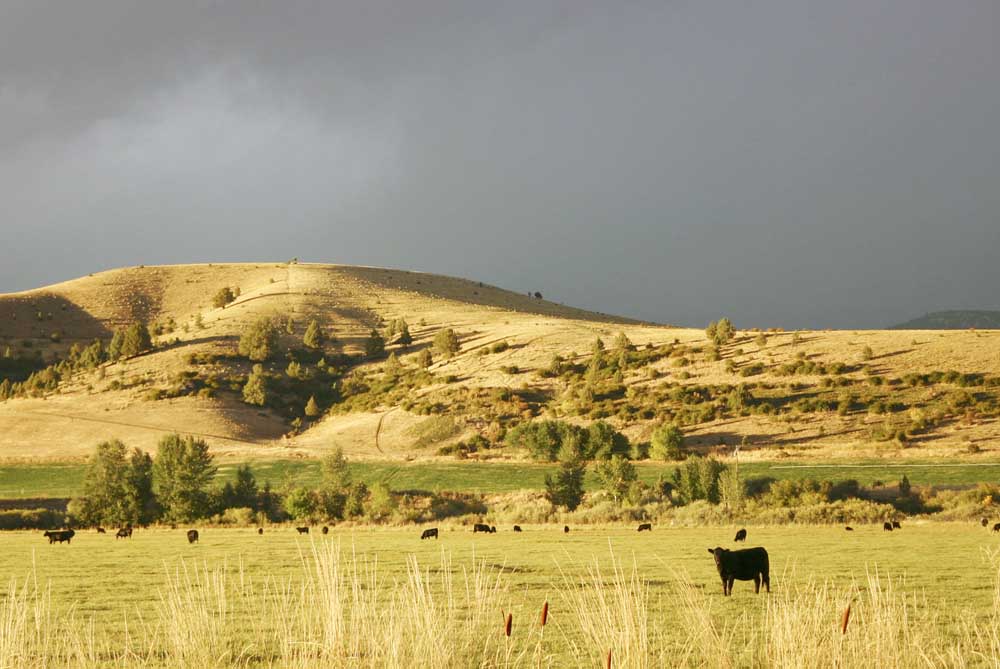BLM grazing costs unchanged, ranchers applaud
Published 4:30 am Wednesday, February 5, 2020

- Grazing allotments in southeast Oregon traditionally used by Hammond Ranches are undergoing an extensive environmental review. The federal government has urged a judge to dismiss a lawsuit against grazing on those allotments. Environmental groups disagree want the lawsuit to continue.
Ranchers in Oregon are applauding the decision by the Bureau of Land Management and the U.S. Forest Service to maintain grazing fees for cattle ranchers from a year ago.
Federal grazing fees imposed by the BLM this year remain at $1.35 per cow/calf pair per month, according to a statement released by the Department of the Interior. The rate, dubbed an “animal unit month,” is the use of public lands by one cow and her calf, one horse, or five sheep or goats for a month. The grazing fee will take effect March 1.
Keeping fees at low and predictable prices allows cattle ranchers to maximize their profits. When costs associated with feeding or processing a cow increases, costs can be deferred to the consumer, raising the cost of beef.
The fee will apply to the more than 500 grazing permits and leases administered by the Bureau of Land Management, Prineville District, which has 460 permit holders. Nearly 18,000 grazing permits and leases are administered nationwide by the BLM, and 6,250 permits are administered by the Forest Service.
“I am glad they are keeping the price stable so people can try to be profitable,” said Jim Bob Collins, a Mitchell-based district leader for the Oregon Cattlemen’s Association. “Cattle prices are not that hot so when the government keeps the prices low it helps.”
Grazing fees cannot fall below $1.35 per animal unit month and any increase cannot exceed 25% of the previous year’s level, according to the law.
Volatility in the beef market in recent years has lowered profit margins for cattle ranchers, according to Tom Sharp, president of the Oregon Cattlemen’s Association. With tightening in the markets, Sharp anticipates public land grazers will be “reasonably satisfied” with stability of grazing fees.
Since 1981 fees have ranged between $1.35 per animal unit month to $2.31, according to a report by Congressional Research Service. The average fee was $1.55.
While ranchers are unsurprisingly pleased with the low fees, environmentalists say the American taxpayer is subsidizing the ranching industry.
“It’s ironic that the American cowboy is supposed to be an icon of self-reliance, and yet the public lands business model relies so heavily on what is essentially a welfare program for very few ranchers in the arid West,” said Josh Osher, policy director of Western Watersheds Project, a Boise, Idaho-based environmental group.
Grazing on private lands can be higher, sometimes by a wide margin. The average monthly lease rate in 16 western states was $23.40 per head to graze on private lands in 2017, according to the Congressional Research Service.
Erik Fernandez, wilderness program manager for the environmental group Oregon Wild, says the cost of grazing livestock on BLM land does not line up with the cost of using the land for hiking, biking and other activities. Fernandez cites the $80 cost for an “America the Beautiful” recreation pass needed to hike camp and fish on public lands.
“These lands are a legacy that belongs to all Americans,” said Fernandez. “They shouldn’t be looted to benefit politically well-connected livestock interests.”






